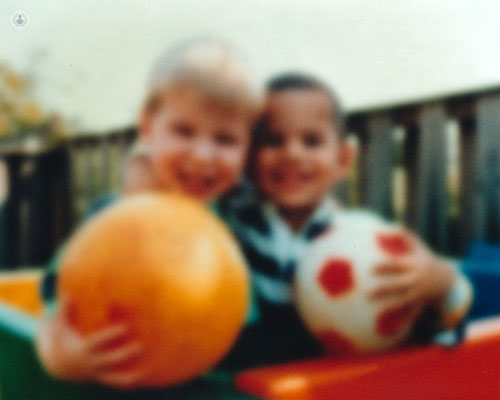Small-incision techniques – the cutting edge of cataract surgery
Escrito por:When vision begins to worsen and become cloudy and your glasses or contact lenses aren’t working like they used to, it could be a sign that you have cataracts. There is only one real answer: surgery. Top ophthalmologist Ms Ranjit Sandhu explains the ins and outs of modern cataract surgery and the cutting-edge small incision techniques involved.
What are cataracts?
A cataract is said to develop when the natural lens of the eye becomes cloudy, causing blurred vision – rather like looking through mist or frosted glass. The symptoms of a cataract include the following:
- Sight becomes cloudy, blurry, or unclear
- Myopia (short-sightedness)
- Changes in colour perception
- Difficulty when driving at night
- Double vision
- Glasses or contact lenses not functioning as they had done
Here you can see what 'normal vision' looks like compared to cataracts-impaired vision:


What is small-incision cataract surgery?
The only permanent treatment for a cataract is replacing the cloudy lens with surgery. In the past, a cataract had to become ‘ripe’ to be operated on through a larger incision requiring stitches. Modern day surgery is a ‘keyhole’ or small-incision approach called phacoemulsification cataract surgery, where the cataract is emulsified using either a laser or ultrasound, before removing it and replacing it with an artificial lens.

What are the advantages of small-incision cataract surgery?
The small-incision, stitchless surgery wound is self-sealing and usually heals itself. This also reduces the astigmatism or the need to have glasses for distance vision. Recovery is quicker, vision is clearer, and there are no stitches to remove.
Will I experience any pain?
The majority of cataracts are removed under a local anaesthetic, which can include either drops or an injection to numb the eye. You will not feel any pain during the operation. However, if you are worried or anxious about the procedure, you can request for the surgery to be done either under sedation or general anaesthetic.
What should I expect after cataract surgery?
If the surgery has been performed under a local anaesthetic, you can go home as soon as you feel ready. If you have had a general anaesthetic, you should be ready to go home in about four hours, depending on how you feel. You will be prescribed eye drops to use after surgery and an eye shield to wear at night for the first 10 days.
How soon should I start to see after surgery?
You will start to see some improvement the day after your surgery and your vision will gradually improve over the next few weeks. You may be able to resume driving in about a week, but should consult your surgeon first. You should be able to see clearly in the distance and will need reading glasses if you have opted for a monofocal lens implant. If you have opted for premium or multifocal lenses, then you will have spectacle independence for most social tasks and should allow the eye to heal over four to six weeks prior to having a test at the optician’s.
I am a diabetic or have been diagnosed with uveitis
Ms Sandhu has expertise in cataract surgery with a special interest in diabetic cataracts and those associated with uveitis, both of which require control and optimisation of their systemic condition as well as their eye condition. She works with endocrinologists and rheumatologists, if necessary, to ensure the best visual outcomes are achieved for her patients.


